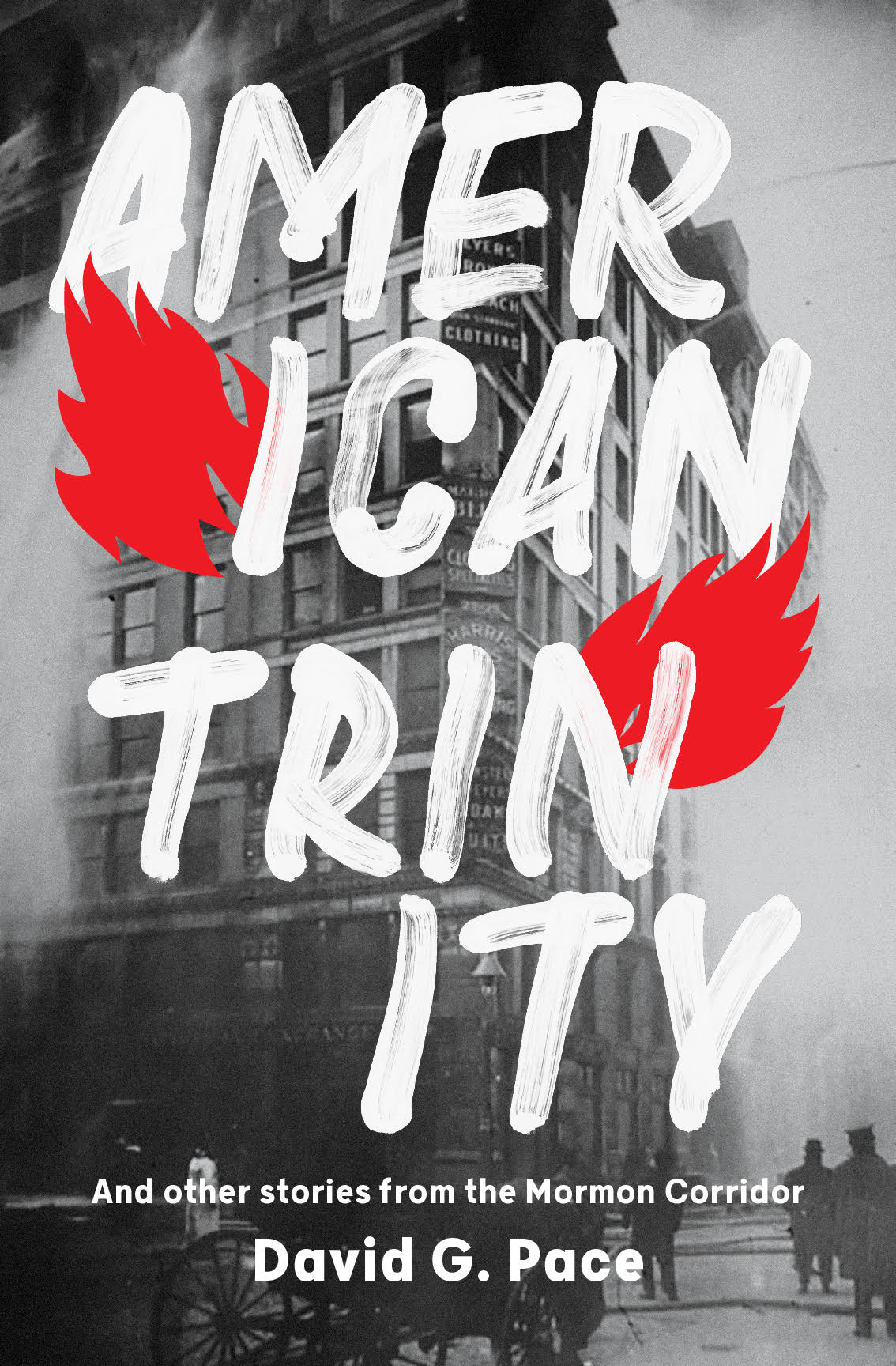David Pace’s American Trinity is a striking collection of twelve short stories tied together by the common thread of Mormonism. The stories were written over the past several decades, and draw from his lifelong experiences with the church.
These experiences are not insignificant, and I found myself somewhat dismayed to hear some of David’s story told on a podcast (Radio Free Mormon) recently, precisely during the time I was reading American Trinity. Were I still a believing Mormon, this would be a story I’d tell during Fast and Testimony meeting as a sure sign that I was meant to read this book, and that it must be “true.”
The story told on the podcast deserves more attention that than I’ll give it here, but in a nutshell David’s father was a professor at BYU who became popular for his charismatic teaching methods and uplifting lectures. Eventually this led to jealousy and anger on the part of Bruce R. McConkie, who then publicly denounced Professor Pace and his writings. This caused a great deal of sadness, confusion, and pain in the Pace household, and their experience was captured beautifully in an essay David wrote in 1995, It is against this backdrop that these stories were written.
All twelve stories are wonderful; here I will synopsize my top five:
“American Trinity,” the collection’s namesake, follows the three Nephites as they grapple with modernity and their prolonged lives. One chooses to embrace secular pleasures like drinking and theater, while all three wrestle with existential questions and the difficulty of their assignment as time passes. David’s writing is masterful in portraying their internal conflicts and moral dilemmas with empathy and emotional insight. As such they have far more depth than was ever included in their source material, including some backstory that details life before their mystical transformation.
As an aside, the wonderful foreward to the book (written by Christopher T. Lewis) compares and contrasts Pace’s three Nephites with those found in several other fictional works, offering a fascinating historical review of these beloved characters over the years.
“Stairway to Heaven” sensitively addresses the aftermath of a teenager’s death within a Mormon context, raising profound questions about worthiness, divine will, and the afterlife. His delicate handling of grief and theological uncertainty reflects his deep understanding of the emotional and spiritual challenges faced by those in mourning.
In “Damascus Road,” he shifts focus to a more personal exploration of faith. Paul’s encounter with Saul, a Jewish man in need of shelter, prompts a profound self-reflection on Paul’s own religious beliefs. This story effectively captures the inner turmoil and reassessment of faith that can occur when confronted with new perspectives and experiences.
“City of Saints” provides an intriguing look at the life of Dennis Cormier, a newly called General Authority. Pace delves into Dennis’s struggle to balance personal convictions, expectations from church superiors, and what is best for his struggling son. This story offers a nuanced portrayal of the challenges faced by those in positions of religious authority, highlighting the often unseen personal sacrifices and moral quandaries involved.
In “Angels in Utah,” Pace weaves together the tales of Rex, a returned missionary turned burglar, and Einar, a coffee-drinking apostate. Set against the backdrop of the 1983 Utah floods, the story intricately links their individual pursuits—Rex’s criminal endeavors and Einar’s efforts to save the Granite Mountain Records Vault. The interplay of these characters and their actions against the dramatic natural disaster showcases Pace’s ability to blend personal drama with broader, thematic elements, creating a suspenseful and engaging narrative.
While I’ll not provide a full synopsis for the remaining seven stories (I must leave you with some surprises after all!) I will give you some highlights. You are in for a chase scene with a meter maid, a celebrity appearance in the temple, the “Mormon Moment” gone awry, a trek through the Himalayas, forbidden liaisons in Central Park, an exploration of the secret church vault holding all the artifacts (not the Granite Mountain vault mentioned above, the other one- the one with the good stuff!), and finally, a poignant missionary story with a Shakespearean twist.
Throughout the collection, Pace’s meticulous attention to detail enriches each story, providing authenticity and depth. His crisp prose ensures that even the most complex themes are accessible, balancing descriptive richness with clear, engaging dialogue and narrative progression.
American Trinity stands out not only for its exploration of Mormonism from multiple angles but also for Pace’s exceptional storytelling prowess. His diverse cast of characters and insightful treatment of religious and personal themes make this collection a compelling read for anyone interested in the intersections of faith, identity, and human experience.
It is available on Amazon.
C.L. Hanson asked both David Pace and Scott Stevens to review the other’s book for this blog. Before exchanging books neither had ever met the other. Nor were they familiar with each other’s writing. The second review will be posted shortly.

Sounds intriguing! I will order the book today!
Thanks for the great review!! I’m reading this book as well — it’s a fascinating study in various facets for Mormon culture and theology.
Many thanks, Scott, for the thoughtful and generous review. It’s gratifying to have another author validate my work this way.
Hope to meet you someday in person
Awesome post! Really enjoyed reading it.